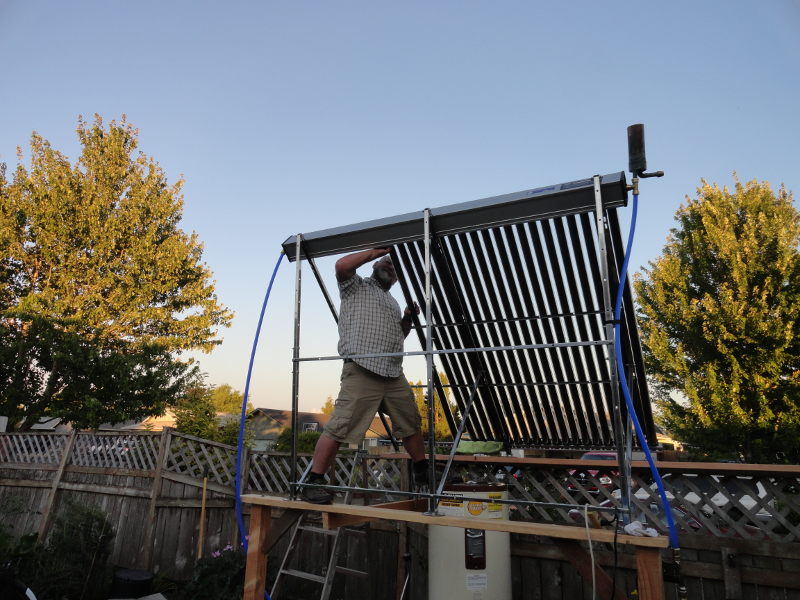It seems that this project is not going to be trivial. We set the 30-tube collector up and started to take temperature readings. It is definitely heating the tank. The thermometer inserted into the shell and against the upper part of the tank shows that the temperature of the tank reached 140F, but the hot side of the heat exchanger never got above 120F. I started looking more closely and burned my ankle when it rubbed against the cold side of the hx. I put a thermometer on it and it showed 175F, just a little below the 180F solar loop.
I was running the solar loop pump at about a gallon per minute at almost no delta-T. I thought that the low delta might be the problem, so I slowed the pump with an in-line valve. When I slowed the pump to about 1/2gpm the header started to boil and steam. That means that a pump rate below 1/2gpm may not be fast enough to transfer heat from the system. So, the geyser pump will have to be faster than that. We don’t have a good measure for how fast a double cricket flows. I will need to look back at the excel program Eldon and Dale wrote to size dragon systems. The current system does have a flow meter on the solar loop. We haven’t calibrated it, but it seems to be working well. I am gong to buy some hall-effect flow sensors to see if we can use them for determining flow rates in sealed systems.
While insulating the solar loop and substituting copper for pex pipe at the head I dropped the pump/flow-meter segment and broke the fittings out of the pump. I ordered a replacement Friday night from Amazon and it arrived by 10AM Sunday! It’s running (in reverse), but it’s heating the tank.
I’m going to pull out the chimney tube and seal it better. I noticed that it was loose in the brass fitting when I inserted it.

